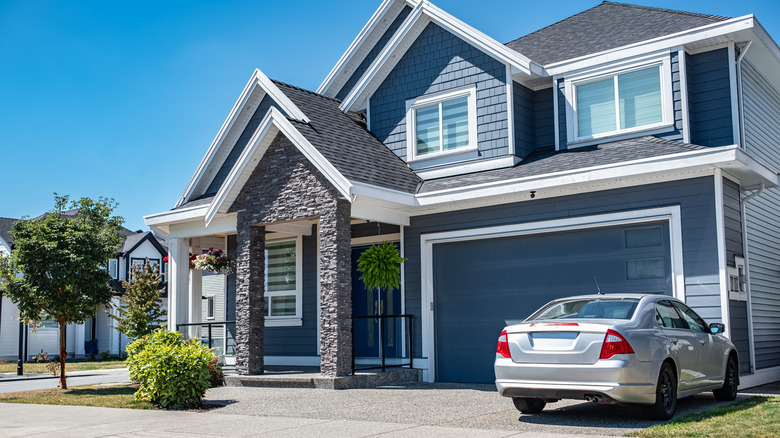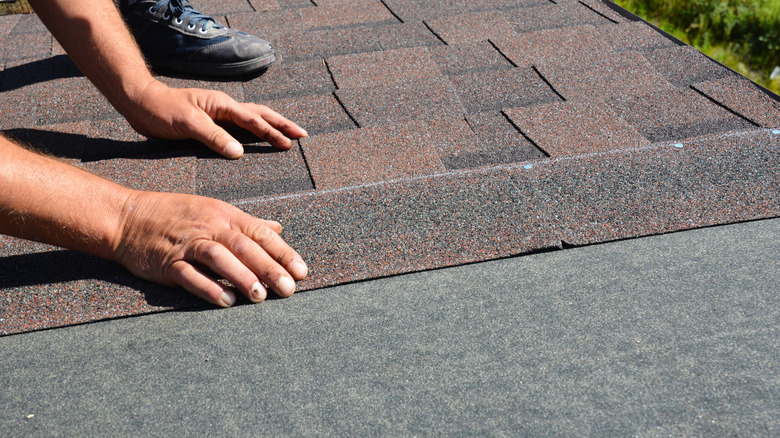The Key Part Of Your Home You Should Always Splurge On In A Renovation
When you think of a home renovation, countertops, new flooring, or a new wall color often come to mind. But actually, the one place that could use the investment isn't inside your home at all — it's the roof. Keep in mind that your roof is what protects every other improvement you make, yet it's commonly overlooked during a remodel.
A roof is the first line of defense against environmental elements and moisture, which can put your home's structure at risk. By replacing your roof, you prevent water damage and structural rot that would cost thousands to repair. In other words, spending more on a quality roof now can buy you several decades of protection. The upfront cost of getting a new roof often pays for itself through fewer repairs and lower energy bills. Plus, since new roofs are much less prone to weather damage, you can get a lower premium for your home. A well-built roof can also do wonders for energy efficiency. It keeps heat in during winter and out during summer. The energy savings add up over time, making the investment worth it.
And when it's time to sell, a fresh roof can boost curb appeal and attract homebuyers who don't want to worry about immediate maintenance costs. Since roofs are expensive, buyers will normally think twice about closing the deal if they expect a roof renovation coming their way. A new roof, however, would be the perfect bargaining chip — and you won't have to worry about inspections hindering the sale. Finally, let's not forget about the return on investment. Roof replacements can recoup around 60 to 70% of their cost in resale value.
When and how to splurge on a new roof
Roofs don't last forever, and putting off replacement can put everything beneath them at risk. Most asphalt shingle roofs hold up for about 20 to 30 years, while slate roof tiles have a lifespan of more than 50 years. Metal ones, on the other hand, can last up to 70 years with little maintenance. If your roof is getting too old or if you've started noticing some trouble signs, it's probably time to think about investing in a replacement. Look for missing or curling shingles, rusted roof valleys, or visible sagging. Leaks are also telltale signs of a deteriorating roof. They might seem minor, but they allow moisture to seep into insulation and framing. This eventually leads to mold and structural damage. Other red flags include water marks on your walls or bubbling paint inside the house.
When it's time to replace your roof, you'll want a material that matches your budget and location. Asphalt shingles are the most common because they're affordable and easy to replace. Metal roofs are champions in durability. They can also reflect heat, lowering energy costs in the process. In warmer climates, tile roofs provide natural insulation and can handle heat without fading. While high-end materials cost more upfront, their extended lifespan and reduced need for replacement make them more cost-effective in the long run. The workmanship matters just as much as the material. This means hiring experienced, licensed contractors for the best results. In any case, remember that your roof is the one part of your home that's always working for you. Splurge once, and you won't have to think about it again for decades.

